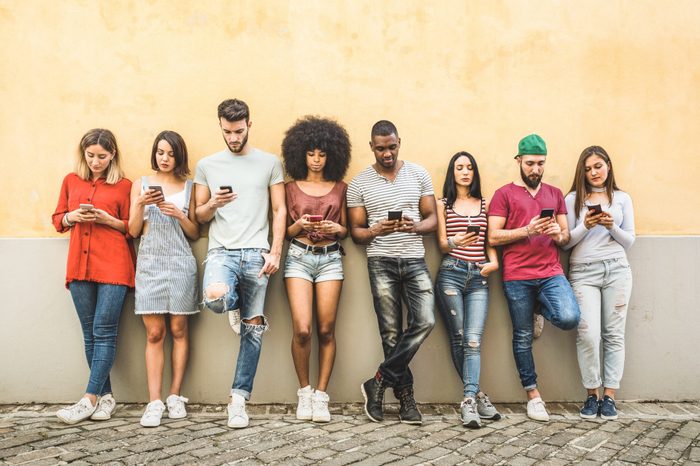
Why are millennials killing everything?
Every other day it seems that millennials (born between 1981 and 1996) are accused of “killing” something. But are they really changing the culture more than any other generation before them? “Every generation engages in a process of looking at the world around them, seeing what’s there that they want to continue, and where they want to refocus,” says culinary historian and Root Kitchens founder Julia Skinner. Millennials may simply be getting blamed for the natural order of how things change, and because they are soon to be the largest generation, their effects are readily apparent. Yet, “millennials aren’t killing industries; industries have failed to adapt,” says Rachel Flehinger, principal of the Adulting School in Portland, Maine, which teaches twenty-somethings life skills like meal planning, home repair, and personal finance.
Hating on millennials has become so popular that headlines pointing out trends in their choices have also become irresistible click-bait. “Because we all live in a much more connected world than before, I wonder if we’re having these conversations around ‘killing’ stuff just because we’re more aware of the shifts in our collective environment, and are aware of them in real-time,” Skinner says. “For me, having the conversation of people ‘killing’ certain products focuses on the wrong things—instead of looking at what is happening, I’m interested in why people make the choices they do. What cultural contexts are informing their choices?” Let’s take a look.

Napkins
Oh, those lazy millennials, so lacking in table manners. For example, they believe there’s no point in buying napkins when you can just use paper towels—don’t they work just as well? Fair point, but many criticized millennials for killing the napkin industry when one study, as reported by the Washington Post, found that only 56 percent of those surveyed bought napkins in the past six months, but 86 percent bought paper towels. Sure, paper towels are less formal, but millennials just don’t go in for formality: Instead, for them, convenience is key.
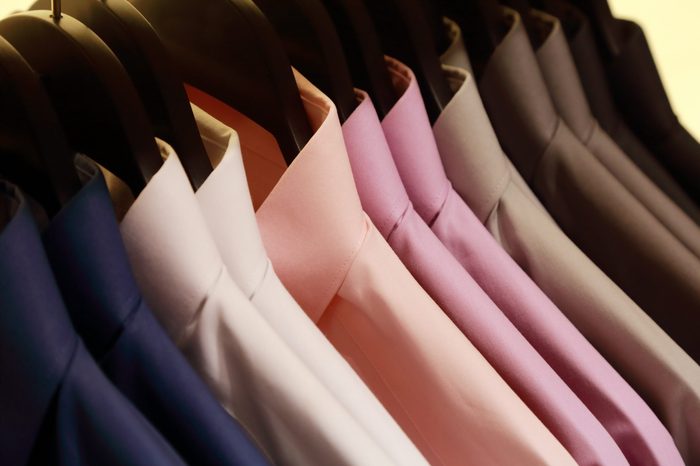
Formal dress codes
Speaking of formality, we’re not living in Downton Abbey—no one of any generation gets formally dressed for dinner anymore. Even at work, formal attire has been in flux since women entered the workforce in the 1920s. Although today some industries still require a suit, most others are decidedly less formal, throwing off the controlling dress codes of the past to allow for more personality and creativity to show through. According to one survey, 40 percent of millennials look to Facebook founder Mark Zuckerberg, famous for wearing hoodies, jeans, and T-shirts, as their business role model. Ironically, though, new expectations might mean you’ll still be judged on your work attire—just now, it’s based on your clothes’ “cool” factor.
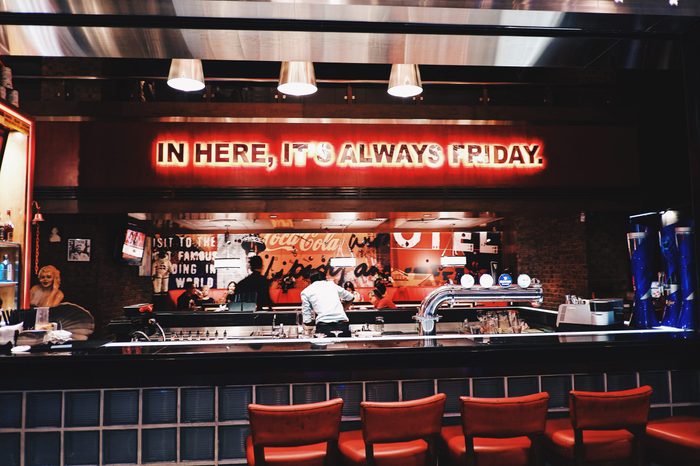
Casual dining restaurants
Even if millennials are dressing casually for dinner, that doesn’t mean they actually want to eat at casual dining chains such as TGI Friday’s, Applebee’s, Ruby Tuesday, or Buffalo Wild Wings, which have seen a 2.4 percent drop in sales. “Sit-down chain restaurants are often in suburbs, although not always, and as tastes change and people have a renewed interest in urban living, they just may not be as interesting or even immediately accessible,” Atlanta-based Skinner says. “If I want to go to an Applebee’s, for example, I would probably have to drive 20 minutes to get there, whereas I can go down the street and get dinner from a local restaurant for about the same price.”
With so many more options—including those that are faster, healthier, and maybe even shipped to your door—diners are simply eating elsewhere. “Millennials are cooking at home more—they’re broke, they want better ingredients such as organic and non-GMO, more convenience, and they care about supporting local independent businesses,” says Flehinger.

Large homes
And millennials just aren’t able to buy that big house in the suburbs near Applebee’s anyway. “Homeownership rates are lower than in previous generations—among other things, you can blame student debt and high prices in coastal cities where the best jobs are found,” says Miron Lulic, founder and CEO of SuperMoney. “For a generation that is often portrayed as privileged, the millennial population is bearing an unprecedented burden of cost inflation: While real income has increased moderately for some [namely, the college-educated], it’s nowhere near enough to keep up with the burden of cost inflation in key areas like homes.” Plus, as priorities shift away from consumption to convenience, environmentalism, and a minimalist lifestyle, forgoing the McMansions seems preferable. Here are the best cities in America for each generation.
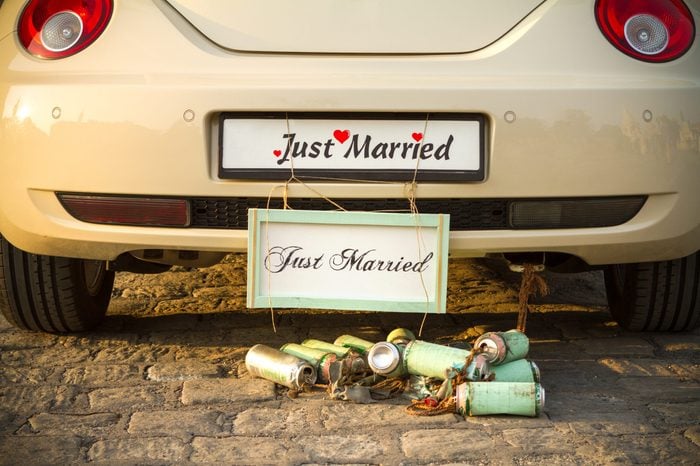
Traditional marriage
Millennials are not only putting off buying houses: They’re putting off—or never—getting hitched, too. According to the Pew Research Center, the trend toward getting married later in life has been going on for two generations, and millennials are continuing it: Forty-six percent of millennials ages 25 to 37 are married, compared to 67 percent of Baby Boomers and 57 percent of GenXers at the same age. Part of this may be economic, as millennials just aren’t as financially secure until later in life. But it also might be a case of shifting priorities, as a record-high number of young people today, one in four, is estimated to never marry (although they may cohabitate).

Divorce
It appears millennials aren’t just ruining marriage—they’re ruining divorce, too. Recent data found the divorce rate dropped 18 percent from 2008 to 2016. “A traditional finding in the research on marriage stability is that age at first marriage is related to the likelihood of divorce,” says Pew Research Center senior researcher Richard Fry. “Marriages involving younger spouses were more likely to break up.” Sorry/not sorry, divorce attorneys: One of the secrets about marriage is that tying the knot later seems to equal fewer divorces.
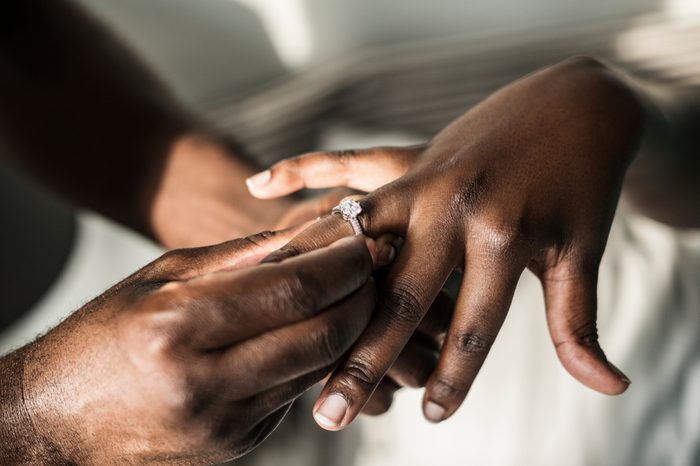
Pricey engagement rings
Fewer marriages means fewer fancy weddings, and fewer expensive rocks, too. This also reflects millennials’ changing priorities away from material possessions. “Millennials aren’t about tradition for tradition’s sake—diamonds equal love? They don’t necessarily buy that,” Flehinger says. Plus, “millennials shop with a conscious—they are aware and their dollars show it,” Flehinger says. “They know about blood diamonds [diamonds mined to finance wars], and their dollars reflect that. Diamonds [both mining and lab-grown] are bad for the environment—they care about that, too.” Here’s why we wear engagement and wedding rings on the fourth finger.
Millennials also have financial concerns on shelling out the cash necessary for the stones, especially since more are paying for their own weddings: One survey found younger Americans think an engagement ring should cost under $2,500, which is less than half of the national average. Sales for diamond companies De Beers and Tiffany have plunged 11 and four percent, respectively, in recent years.

Dinner dates
If millennials aren’t getting engaged, are they at least dating? Not in the same way young adults used to. But the trend away from dinner dates makes sense: Who wants to sit across from a stranger for two hours, especially when you’re broke and the food your eating is more expensive than just having a drink or a coffee? Plus, because online dating has become more common and acceptable according to trend research, more millennial daters haven’t actually met face to face before, making dinner dates even more potentially awkward. And being single is just not as big a deal, with a survey from online dating app Tinder finding 72 percent of young millennials made a conscious decision to stay single for a period of time. Check out these creative options for outdoor dates.
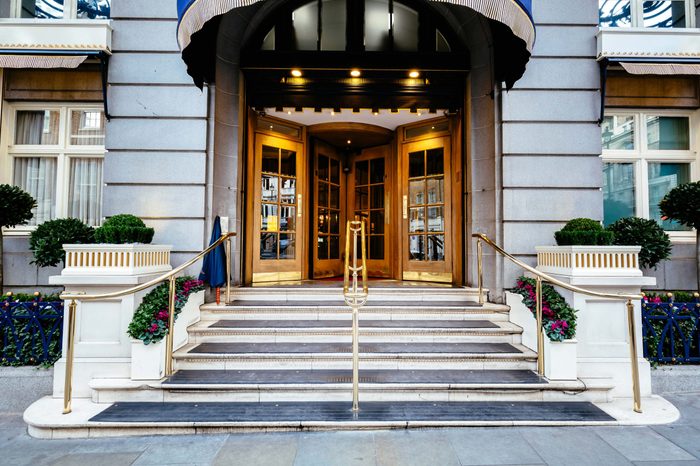
Traditional hotels
When was the last time you unpacked your clothes into the hotel dresser, used the tub in your hotel bathroom (eww!), or sat down at your room’s desk to use the complimentary pen and stationery? Today’s hotel chains are struggling to keep up with millennials who just want a comfy bed to sleep in, plus a communal space to hang out with other guests. Millennials are gravitating toward trendy boutique hotels that provide a unique, authentic atmosphere chain hotels don’t; or an AirBnB that offers cost savings.
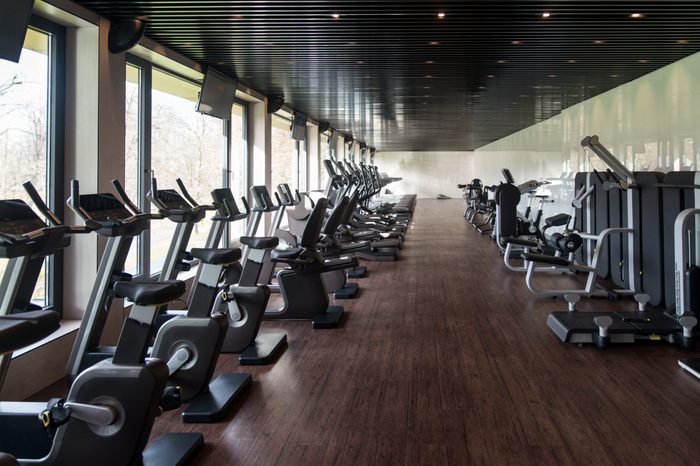
Big box gyms
Millennials don’t go in for giant gyms that offer every piece of exercise equipment on earth; instead, they want a tailor-made experience that lets them connect as a community, such as SoulCycle, Pure Barre, and Barry’s Bootcamp. “Boutiques have successfully created the concept of ‘you show up, we will do the rest’—all the person has to do is consistently get themselves to class and everything is set up for them to succeed,” says Conor O’Loughlin, CEO and founder of boutique fitness management software company Glofox. “In addition, the class-based nature of boutiques means that members are driven by the motivation and support of their fellow members.” This smaller membership base creates a tighter knit community, allowing members to feel part of something. “This explains why boutiques are good at building distinctive tribes their members are proud to show off and tell their friends about, which is why they are growing so rapidly,” he says.
But don’t count out big box gyms for good—if they can adapt. “Many of the big-box gyms are becoming more class-based and member-experience focused,” O’Loughlin says. “They also have the ability to price local independent studios out of the market, assuming they can modernize their programming, pricing, and member experience.”
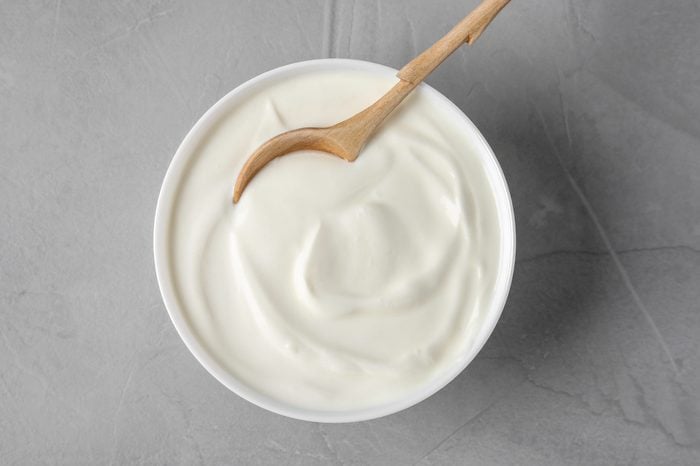
Mayonnaise
Millennials are picky about their condiments, and as a result, this favorite of potato salad lovers everywhere has spoiled. Between 2012 and 2017, mayonnaise sales fell 6.7 percent, and a viral article in Philadelphia Magazine claimed that the finicky tastes of millennials were to blame. But of course, mayo isn’t actually good for you, so those looking to eat healthier—which millennials are—may eschew the condiment. Companies like Heinz is now coming up with alternative mashups for basic mayo: Mayochup (mayonnaise and ketchup), Mayomust (mayo and mustard), and Mayocue (mayo and barbecue). The original is also getting a healthy mayo makeover: “Real Mayonnaise” is made from cage-free eggs, lemon juice, oil, and vinegar.

American cheese
Another staple of the childhoods of many an older generation that’s being squashed by millennials? American cheese, which is often laden with preservatives or made with so little actual cheese it can only be called “cheese product.” Millennials strive for nothing if not authenticity, so they prefer real, and more expensive, cheeses like asiago, gouda, and fontina. Sales of Kraft Singles and Velvetta, meanwhile, are down 1.6 percent and have been dropping for the past several years. But if millennials are broke, why are they going for expensive cheese? “I see re-engaging with food choices, and challenging the status quo around food, to be acting in one of the spaces where they are able to exert control,” Skinner says.

Cans of tuna
Without mayo, how can we have tuna salad? And without American cheese, how can we have tuna melts? Oh, wait: canned tuna itself is another food millennials are turning their back on, with sales dropping 42 percent over the last three decades. Why? It could be because for convenience-driven millennials, opening a can of tuna is too much work—and they might not even own a can opener, one exec from tuna company StarKist told the Wall Street Journal. In addition, fresh fish sales have increased, in keeping with the millennial trend of eating less processed food. These 11 seafood facts will change how you eat forever.
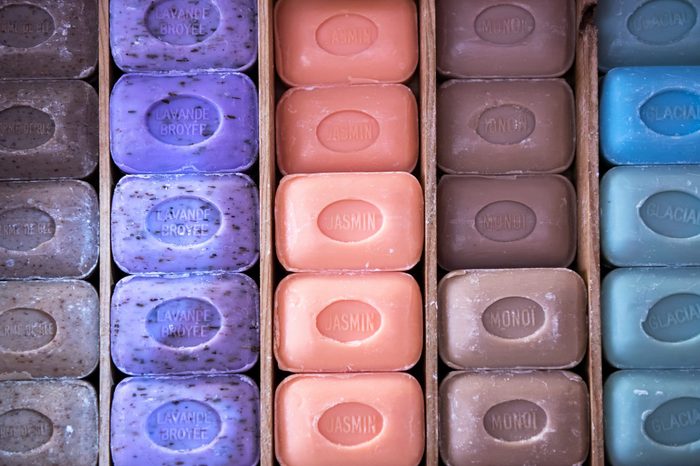
Bar soap
One industry that may have successfully adapted after being “killed” by millennials is soap. The bar variety was considered icky, harsh on the skin, and less convenient than liquid options, and sales dropped 2.2 percent from 2014 to 2016. Now, though, “bar soap, previously killed by millennials, is actually making a resurgence,” Flehinger says. “They killed it originally because formulations hadn’t been changed for years, and millennials are very aware of using products that work best for their skin. Now though, soap companies have adapted with better and different formulations, and less of an environmental footprint—i.e., less plastic—than liquid soaps, so millennials are adapting and switching back.”

Wine corks
Although older generations may view wine bottles with screw caps as lower quality, millennials don’t, according to a report in the Atlantic. And actually, the convenience of screw caps—and the lack of need for a corkscrew—may be a selling point for this wine-loving generation. In addition, a concern over cork spoiling issues (now mainly rectified by cork producers) may have been responsible for corks losing an estimated 40 percent drop of the wine closure market in the last generation. Yet millennials may find more to love about corks, including their sustainability: Only the bark of the cork tree is harvested, allowing the trees to flourish and provide environmental benefits. If you do drink corked wine, you’ll want to know how to open a wine bottle without a corkscrew.

Motorcycles
Sales for motorcycle giant Harley-Davidson have stagnated, with recent analysis showing millennials just aren’t buying bikes at the same rate as previous generations. Why? Besides that riding motorcycles is more dangerous than you thought, millennials just aren’t into motorcycling as a hobby; instead, they would be most likely to ride for “ease of transportation.” But in another example of “adapt or die,” Harley-Davidson is viewing this change as an opportunity to offer new products, such as an electric motorcycle, to the younger generation. “There’s nothing new here,” Harley-Davidson told CNBC in a statement. “Our advanced analytic capabilities allow us to deeply understand rider migration trends. In fact, our knowledge of riders informed our strategy to build the next generation of Harley-Davidson riders globally.”
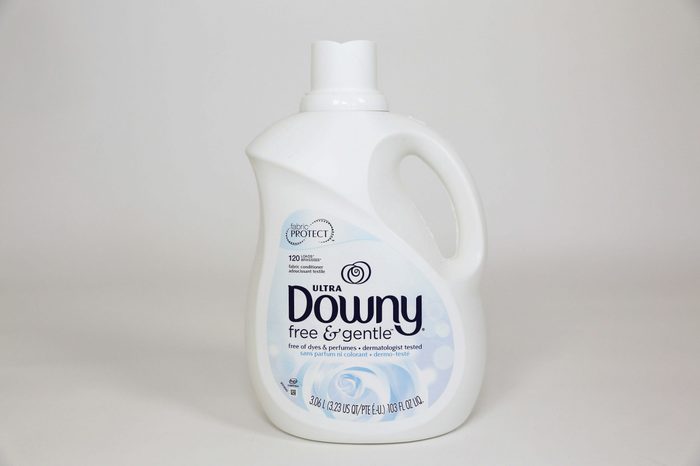
Fabric softener
What is fabric softener really for, anyway? According to recent reports, millennials don’t actually know. Could that be a result of not learning how to do their own laundry, one of 34 little life skills everyone needs to be a grown-up? Liquid softener sales fell 15 percent between 2007 and 2015, with Procter & Gamble’s Downy brand plummeting 26 percent during that time period. For millennials, this might be due to financial reasons (why buy an unnecessary product?) as well as environmental and health concerns with the chemicals in fabric softener. The product is also less needed because new detergents, washing machines, and fabrics make clothes come out less rough than before.
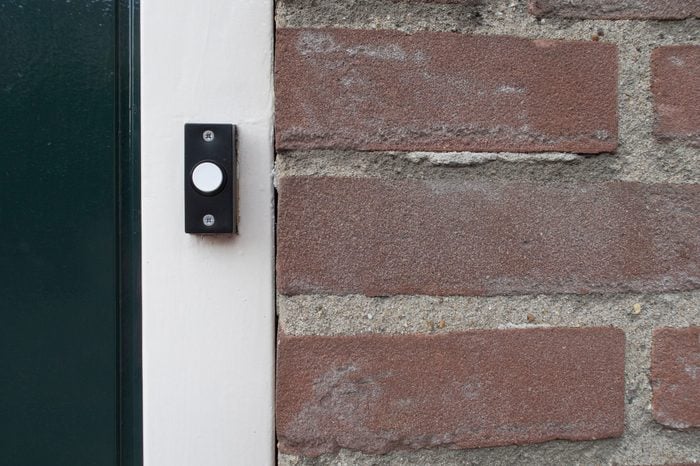
Doorbells
While this isn’t exactly a scientific study, a viral Tweet that garnered over 126,000 retweets and nearly 600,000 likes pointed out that millennials don’t ring doorbells anymore—instead, they just text the word “here.” Is this anxiety over face-to-face interaction? Fear of who could be at the door? True, texting makes sense if you’re picking someone up in a car (why get out?), and texting also doesn’t wake sleeping babies or make dogs bark; doorbells also have a tendency to be broken. But in the words of one millennial Twitter user, “The doorbell legit scares me now. I jump every time. It just seems so aggressive now when you could just text.”

Razors
Beards—and now mustaches—are trendy for millennials: With less formality comes less judgment of not maintaining a clean-shaven appearance. Facial hair is authentic, and razor blade replacement cartridges are expensive. Both might be reasons why Procter & Gamble again blamed millennials for slumping sales and an $8 billion write-down. “Lower shaving-frequency has reduced the size of the developed blades and razors market,” P&G Chief Financial Officer Jon Moeller said on a call with analysts, reported MarketWatch. In addition, the U.S. market for men’s shaving products shrunk by over 11 percent in the past five years. But, there might be hope for razor companies by expanding their facial hair grooming products instead.

Breakfast cereal
In perhaps the most head-scratching thing millennials have allegedly killed, one survey found 40 percent of millennials find the cleanup involved in eating breakfast cereal—putting the bowl in the dishwasher?—inconvenient; it’s easier to grab portable food, such as a breakfast sandwich or yogurt, on the go. (Some millennials hit back at this notion, saying they actually don’t eat cereal because it’s processed food lacking in nutrition, expensive, and full of sugar). In any case, cereal saw a 5 percent drop in sales between 2009 and 2014. Kellogg cereal company, though, is getting creative by tapping into millennials’ love of Instagram-worthy food, partnering with celebrity chefs to incorporate cereal into visually appealing concoctions. Corn flakes with avocado and cayenne pepper, anyone? Next, read on to find out the 20 things you’re probably blaming on Millenials but shouldn’t.
